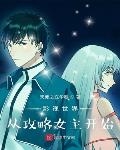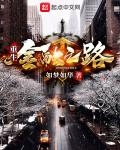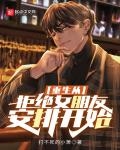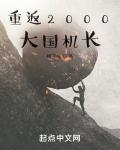Chapter 452: Real Technology
Since the launch of the FES blue and white game console in 1983, Shirakawa Electric has also carried out a series of upgrades to this 8-bit machine and developed peripheral products in recent years.
The supporting hardware such as controllers, keyboards, light guns, etc. are already very complete, and some auxiliary software support is also not missing.
However, the generation with the biggest upgrade is the 16-bit blue and white SES launched last year.
Compared with the previous generation of 8-bit machines, 16-bit machines have been greatly improved in both processor and memory.
Now that the performance has been improved, game development must naturally keep up.
The Legend of Zelda series of games, which HAL had developed for two years, also began to be launched on the 16-bit SES.
This new Japanese RPG game has a huge story background, character growth, and supports saving game progress during power outages.
So once it was launched, it quickly became popular in the Japanese gaming industry.
Even the extremely high game price of 9,580 yen cannot stop people's enthusiasm.
It's the bubble era now, who still cares about pocket money of less than 10,000 yen?
The game was rich in content and excellent in quality, so it easily sold millions of copies, and the game publisher HAL made a lot of money.
Of course, because it supports power-off saving, the game cartridge comes with a button battery.
Its main function is to power the storage circuit on the cartridge, which makes the game cartridge a little more expensive.
However, the price of 9,580 yen is still a drop in the bucket compared to the cost of around 1,000 yen.
Stimulated by HAL's huge profit of tens of billions of yen, Square Enix, which has been cooperating with Shirakawa Electric, also launched the "Final Fantasy" series of games.
In addition, Yuji Horii, who had already established his own studio, also developed the first "Dragon Quest" game during the same period.
Without exception, they were all launched on the 8-bit FES or 16-bit SES machines. With the support of these three major RPG games , Shirakawa Electric's game consoles are in the lead.
As the other two giants in the field of game consoles, Nintendo barely maintained a market share of less than four tiers, and as for Sega, it almost disappeared in Japan.
In North America, however, Sega, with its rich arcade IP, is competing closely with Nintendo in the market.
The two companies together have taken up almost half of the market, which can be said to be a case of "when the east is dark, the west will shine."
However, whether in Japan or in overseas markets, Shirakawa Electric is a well-deserved giant.
Even in the field of handheld game consoles, this advantage continues to extend.
Thanks to its outstanding performance in the fields of game console hardware and software, the profit gap between Shirakawa Electric's game console division and its audio-visual division has been gradually narrowing.
As for HAL, it relies on its own game development and publishing games for other manufacturers.
In last year's financial report, it alone contributed nearly $1.2 billion in profits to Shirakawa Holdings.
Of course, due to the continued depreciation of the US dollar, the value of this number may not be as high as before, but it is already very difficult to achieve.
If this trend continues, HAL's future profits may be able to compete with Shirakawa Electric.
It was precisely because of seeing this that Baichuan Feng had the idea of slowly transforming himself.
However, transformation does not mean giving up the previous business, but the subsequent R&D investment may focus more on the other side.
The technologies of portable players and CD players have reached a bottleneck for the time being and there will be no major changes in the short term.
Therefore, in order not to waste manpower, the focus of research and development can be shifted to entertainment games and communication technology.
At least in the foreseeable future for Shirakawa Kaede, both of them have great potential, and technology is in a stage of rapid progress.
Similarly, in terms of exports, both the United States and other Western countries seem to be indifferent to products such as game consoles.
Whether it is Shirakawa Electric or Nintendo, the overseas market export share of the game console business has not decreased much.
Firstly, it may be related to the fact that they have no competitors in North America. Secondly, it is also related to the attitude of the North American government.
The U.S. Department of Commerce keeps a close eye on imported goods such as automobiles, home appliances, and semiconductors, but does not pay much attention to entertainment electronic products such as game consoles.
This may be related to the fact that game consoles only satisfy spiritual enjoyment but do not bring any impact to local industries .
That’s great. Shirakawa Electric can put more effort into game consoles in the future.
"In North America, Atari is almost no longer a concern in the home console market. Two and a half of the three competing game console manufacturers are from Japan."
Here at HAL, Shirakawa Kaede and others are sitting together, analyzing the global game console market.
"The shock caused by the Atari impact is even greater than expected. Consumers there now prefer to trust our Japanese company rather than Atari."
When mentioning this, Iwata couldn't help but want to laugh. As for Yamashita Daiji and Akagi, they simply bared their big white teeth in gloating.
"The great good thing Atari did a few years ago has benefited us greatly to this day~"
"Haha, please do more good things like this."
Several people laughed and joked, and for a moment the office was filled with a happy atmosphere.
"Okay, let's get down to business." Baichuan Feng waved his hand to stop them from going off topic.
“Although North American local game console manufacturers are vulnerable, Japan’s rivals should not be underestimated.
Especially Sega, whose performance in North America is much better than that in Japan.”
Sega SG-1000, Shirakawa Electric's FES, and Nintendo's FC were released on the same day, but Sega performed the worst among the three.
In Japan, the total sales over the past few years were only about 300,000 units, far surpassing Shirakawa Electric and Nintendo.
However, it unexpectedly sold more than two million units in the North American market, which may be related to the fact that Sega's arcade machines have a large user base in North America.
Relying on this group of users, Sega is now focusing on game consoles and preparing to launch the fourth-generation home game console MD this year.
Like Shirakawa Electric's SES, it is also a 16-bit machine, and even the chip uses SIC's 80281.
That's right, Sega MD purchased SIC's 16-bit chip as the core processor of the game console.
The reason is that they are cheap. Similar chips from Motorola and Intel cost at least 21,000 yen each.
This cost is too high. Nowadays, the price of game consoles generally does not exceed 20,000 yen.
A chip costs more than 20,000 yuan, and the price of the whole machine will be even more exaggerated.
Although it is the fourth-generation game console, a slight price increase is normal, but doubling it is a bit too exaggerated.
So in order to find a suitable and low-cost 16-bit chip, Japan's Sega CEO Hayao Nakayama directly visited Shirakawa Kaede.
Nakayama Hayao has only one goal, which is whether SIC's 80281 can be reduced to less than 5,000 yen.
Facing Nakayama Hayao's Dragon Slaying Sword, Shirakawa Kaede has only one condition.
That is, as long as the number of chips purchased by Sega is more than 300,000, SIC will agree to this price.
In the end, Nakayama Hayao gritted his teeth and placed an order for 300,000 pieces directly to SIC, and Shirakawa Kaede did not break his promise. SIC finally supplied Sega at a price of 4,980 yen per piece.
In this way, Sega's fourth-generation game console and Shirakawa Electric's fourth-generation game console both used the 16-bit SIC80281 chip.
Sega purchased SIC chips because they were cheap, and this chip had been proven by the SES platform and could be said to be a huge success.
In addition, the hardware of the game console only plays a supporting role, and the factor that really affects the sales of the game console is the game itself.
Therefore, Sega finally chose SIC's chip.
The main reason why Shirakawa Kaede agreed to supply goods to competitors was that he wanted to help SIC expand its market as much as possible.
The more platforms are used, the broader the potential market prospects of SIC will be.
After all, SIC has not had a good time in the past two years and is in urgent need of more customers to make up for its losses.
Besides, HAL has confidence in its own game consoles, and its internal consistency will not be easily surpassed by Sega MD.
Now Shirakawa Electric has taken the lead in releasing its own 16-bit machine on the market, and Sega MD is about to be released.
Although no news has been leaked from Nintendo yet, Shirakawa Kaede does not believe that it will remain indifferent.
In addition, according to the information that Shirakawa Kaede has learned, NEC, Casio, and even Bandai are all preparing to enter the game console market.
A game console war in the future is likely to be inevitable.
It can be said that the game console market has begun to slowly roll inward.
However, Baichuan Feng now set his sights on the fifth-generation game consoles, that is, the 3D game generation consoles.
“Although our 16-bit game consoles were a huge success, it does not mean that we will dominate the market in the future like we do today.
NEC, Bandai, SNK, and even our old friend Namco are all unwilling to be left out and want to get a piece of the pie.
It is foreseeable that the game console market will become more and more lively in the next few years.”
After Baichuan Feng said this, everyone's faces became a little serious.
They had heard about all this, because HAL and Shirakawa Electric had made so much money in the game console business in recent years.
We all work in the electronic products business, so it's normal for us to be jealous of each other.
“So in order to maintain our leading position in the game console market, we have to always stay ahead so we don’t have to worry about being surpassed by others.
The next fifth-generation game console is the key to our success, and the internal code name of the fifth-generation game console is Game Station.
This time our game console will no longer use cartridges, but CD-ROM discs instead."
"Use a CD?" Iwata thought.
"That's right," Baichuan Feng nodded affirmatively, "It's time to let the players see what a real game is!"
"Huh?" Everyone was surprised by Baichuan Feng's bold words.
"The 700MB of space on a CD-ROM is definitely not comparable to the hundreds of KB or tens of MB of content on a cassette.
So we have to make full use of this advantage, and now we can bring out the 3D images that previously only existed in the concept stage."
Baichuan Feng's words instantly made everyone excited. 3D graphics, today's players haven't really seen what 3D games look like, right?
“HAL will set up a dedicated 3D computing group, and SIC will also develop corresponding graphics chips.
Our goal is to launch our fifth generation console before 1991!"
"Hai!"
CD-ROM has undergone several years of development and now the technology is very mature.
If you don't apply your unique skills to the game console at this time, it would be a waste of your talent.
Shirakawa Electric is quietly making preparations for its future industrial layout, and other physical manufacturing industries in Japan are also using various means to survive the crisis of another surge in the yen.
Taking out a loan from a bank for emergency is the lowest possible option.
Xiao Ri, who has a lot of creative ideas, tried every possible way to reduce production costs and summarized three major strategies for this purpose.






